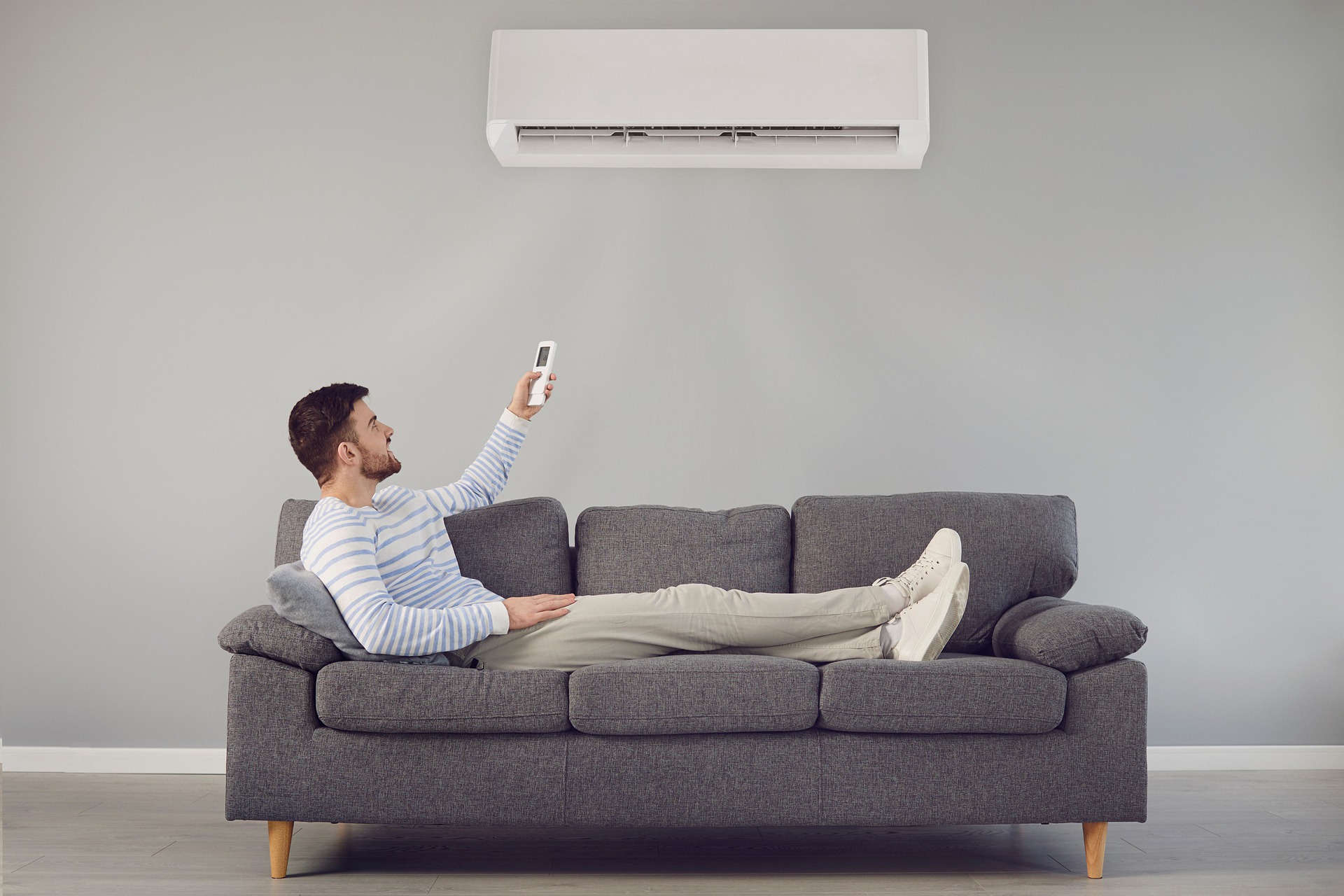
Source: https://pixabay.com/photos/air-conditioner-man-sofa-7267527/
Your heating, ventilation, and air conditioning (HVAC) system requires more than just a check-up once in a while to keep it running smoothly and efficiently. No matter the type of system you have, there are simple things you can do to care for your HVAC system and keep it running well year-round. Maintaining your HVAC unit doesn’t have to be complicated or expensive. Here are some simple care and maintenance tips to keep your HVAC system running smoothly year-round.
1. Schedule Regular Professional Maintenance Checks
The best way to keep your HVAC system running efficiently is to schedule regular professional maintenance inspections. Avoiding these checks could result in more severe problems and expensive damages. Note that you may not detect some issues with your A/C, but experienced technicians will. Experts perform the following tasks during routine maintenance examinations:
- Balance your HVAC system
- Lubricate moving parts
- Check the refrigerant (gas) level.
- Inspect the compressor, condenser, thermostat, coils, and other electrical components
- Check and report any potential problems
- Make any necessary repairs or part replacements
This simple step can help prevent significant issues down the road and keep your system running efficiently. If you notice anything wrong with your system- such as odd noises or problems with temperature control- contact an HVAC technician immediately for repairs.
2. Clean or Replace the Filter
A clean or new filter can do wonders for your HVAC system. Not only will it help the system run more efficiently, but it can also improve air quality in your home. To clean the filter, remove it from the unit and vacuum away any dirt or debris. If the filter is damaged or too clogged to clean, replace it with a new one.
Professional HVAC technicians may recommend replacing filters more often if you have pets, smokers, or carpeting at home. If you can’t replace the filters, contact a reliable air conditioning service provider for a quality and affordable job.
3. Declutter Around the Indoor Unit
One of the most important things you can do to keep your HVAC system running smoothly is to eliminate any clutter around the indoor unit. This includes keeping any furniture or other items at least two feet away from the system to ensure proper airflow. You should ensure that any curtains, blinds, or anything else near the unit are not blocking the vents on either side of the indoor compartment.
If there are windows around this area, close them when it’s hot outside to let cool air circulate inside. Keeping a clean and clear path for air will help reduce energy consumption by ensuring a steady flow of cool air into your home when needed.
4. Keep the Area around the Outdoor HVAC Unit Clean
One of the most important things you can do to keep your HVAC system running smoothly is to keep the area around the outdoor unit clean. This means wiping out dirt and removing debris, such as leaves or branches that might block the unit’s airflow. You should also ensure the area around the unit is clear of any objects that could impede airflow or damage the unit. Be sure to keep an eye on your outdoor unit to spot and deal with any buildup immediately to avoid common but costly HVAC problems.
5. Check Your Thermostat Settings
A crucial step in keeping your HVAC system working flawlessly is to check your thermostat state. Check your thermostat’s settings at least once weekly to ensure it’s still on track. You should also check the batteries in your thermostat and replace them if necessary. Installing a programmable thermostat is one of the best ways to save you money on energy bills, improve your HVAC efficiency, and help avoid costly repairs, but only if it’s programmed correctly.
6. Make Sure the Drain Line Isn’t Clogged
A clogged drain line can cause your system to overheat, leading to severe damage. The first step is to check the drain line to ensure it isn’t clogged. If you see any water around the base of your unit, it’s a good indication that the drain line is clogged.
To clear a clog, you’ll need a wet/dry vacuum. Attach the vacuum hose to the drain line’s edge and turn on the vacuum. You might have to do this several times before you see results. Once the clog is cleared, remove the hose and make sure that there are no more obstructions in the line by pouring water down it.
Don’t household cleaners or bleach into your condensate line; they can damage your system and home. Ensure you use cleaners specifically designed for cleaning A/C drain lines. If you want to keep algae and bacteria at bay, vinegar mixed with distilled water can help.
Endnote
Although HVAC systems are one of the most critical aspects of your home, many people take them for granted until they stop working. While HVACs are relatively self-sufficient, they must perform regular maintenance to ensure they run as smoothly as possible. You can also consider replacing your old HVAC unit if necessary.
Ref: THSI-




 POSTED BY
POSTED BY 

